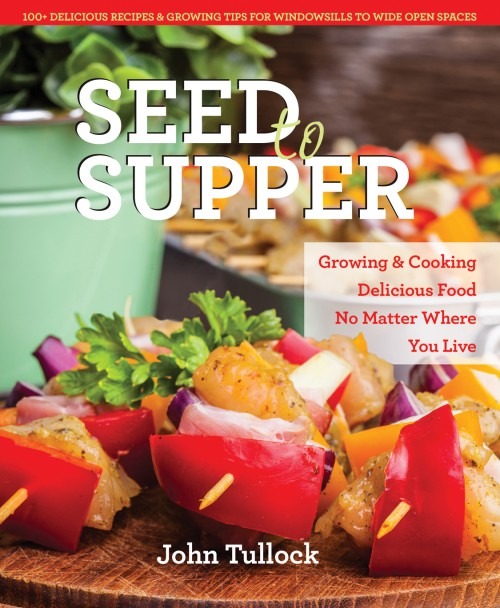
SEED TO SUPPER: Growing and Cooking Delicious Food No Matter Where You Live
John Tullock
HCI
March 29, 2016
$21.95/Paperback
ISBN-13: 9780757318887
John Tullock
HCI
March 29, 2016
$21.95/Paperback
ISBN-13: 9780757318887
John Tullock is a lifelong gardener, self-taught gourmet cook and trained ecologist whose previous books have covered a range of topics including aquariums, hardy orchids, sustainable living and starting a small business. His Natural Reef Aquariums sold over 75,000 copies and is considered a “classic” in its subject area. Growing Hardy Orchids was named by the American Horticulture Society as one of the five best garden books of 2006. Pay Dirt, released in 2010, sold over 10,000 copies during its first six months. The New American Homestead: Sustainable, Self-Sufficient Living in the Country or the City has inspired people all over the country to grow food at home. His most recent works are Idiot’s Guides: Vegetable Gardening andIdiot’s Guides: Straw Bale Gardening, both published by Alpha Books. He writes, cooks and gardens on his suburban homestead near Knoxville, Tennessee.
Not since the Greatest Generation marched off to war have Americans embraced home food gardening with such enthusiasm, with everyone from apartment dwellers to the First Family growing fresh, wholesome food. SEED TO SUPPER provides the perfect introduction to food gardening and cooking with homegrown produce.
America is a land of foodies. From local supermarkets to gourmet food trucks, we’re cooking, buying and eating more discriminately than ever. And, as our options for healthy eating grow, so does our awareness of additives, preservatives and other ingredients on food labels that we can’t pronounce (and don’t want). So, what could be more natural than taking our passion for food to the source? To actually nurture herbs and vegetables from tiny seeds to aromatic glory is beyond a mere accomplishment―it’s deeply fulfilling (and delicious!).
In SEED TO SUPPER Tullock takes a novel approach to help growers succeed by organizing cooking and growing information by the nature and size of the garden space itself. Beginning with herbs and greens that can be produced at a sunny window, he moves on to larger containers for a patio or deck, followed by the diversity of raised beds, and finally to an integrated backyard landscape.
Yet, SEED TO SUPPER is much more than a gardening book. Tullock includes more than 100 kitchen-tested recipes that feature the most popular homegrown vegetables and fresh herbs, which can be paired with meat and dairy from the grocery. And it doesn’t take an expert either in the garden or in the kitchen to grow the ingredients or create the wonderfully nutritious recipes featured in each chapter.